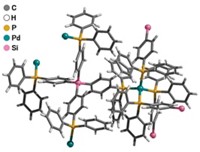Advertisement
Grab your lab coat. Let's get started
Welcome!
Welcome!
Create an account below to get 6 C&EN articles per month, receive newsletters and more - all free.
It seems this is your first time logging in online. Please enter the following information to continue.
As an ACS member you automatically get access to this site. All we need is few more details to create your reading experience.
Not you? Sign in with a different account.
Not you? Sign in with a different account.
ERROR 1
ERROR 1
ERROR 2
ERROR 2
ERROR 2
ERROR 2
ERROR 2
Password and Confirm password must match.
If you have an ACS member number, please enter it here so we can link this account to your membership. (optional)
ERROR 2
ACS values your privacy. By submitting your information, you are gaining access to C&EN and subscribing to our weekly newsletter. We use the information you provide to make your reading experience better, and we will never sell your data to third party members.
Materials
Low Cost MOFs With High Surface Area
New materials are prepared by combining metal units with two types of standard linkers with differing lengths
by Mitch Jacoby
June 4, 2012
| A version of this story appeared in
Volume 90, Issue 23
Novel types of inexpensive metal-organic framework (MOF) compounds with high surface areas can be prepared by simultaneously combining metal components with two types of low-cost and readily available organic units, according to a study in Chemical Science (DOI: 10.1039/c2sc20407j). MOFs are crystalline microporous solids built up from rigid molecular building blocks composed of metal clusters or metal ions connected via organic ligands (or linkers). The compounds’ exceptionally high surface areas and the potential for commercial application in various fields including gas storage, separations, and catalysis have driven intense research efforts in the past decade and led to many new types of MOFs. Yet many of these materials rely on exotic linkers and complex linking strategies. They are often selected with the aim of avoiding formation of interpenetrating lattice networks, which reduce surface area by creating regions within the crystals that are inaccessible to gas molecules. Kyoungmoo Koh, Adam J. Matzger, and coworkers at the University of Michigan, Ann Arbor, show that interpenetration can be avoided by combining two common linear dicarboxylate linkers of different lengths with standard metal components. In an initial study, that strategy led to two MOFs with surface areas over 4,000 m2/g, a competitive but non-record-setting value.





Join the conversation
Contact the reporter
Submit a Letter to the Editor for publication
Engage with us on Twitter